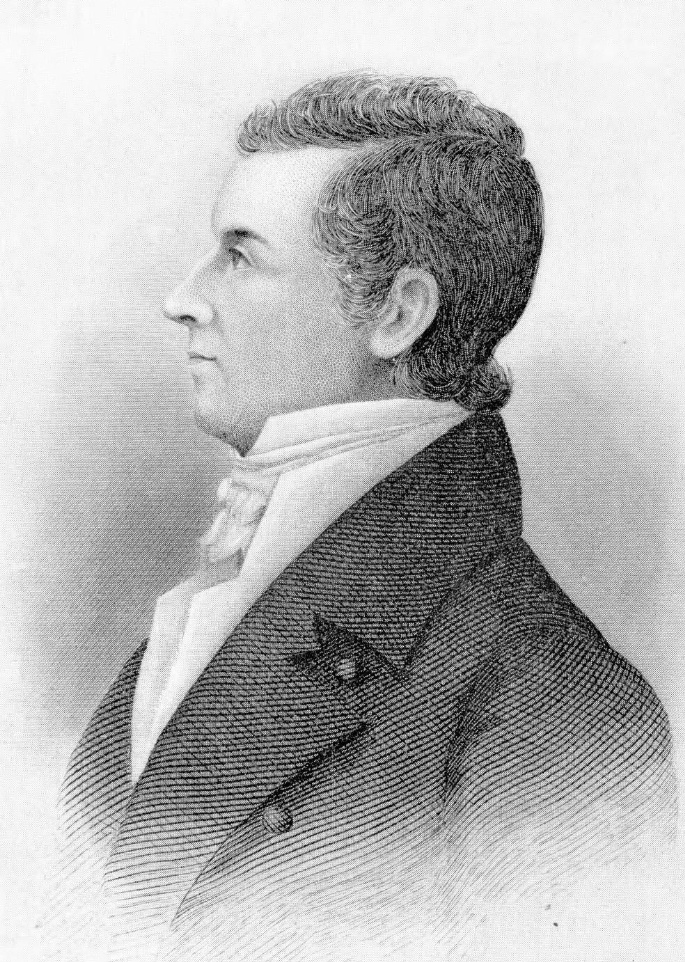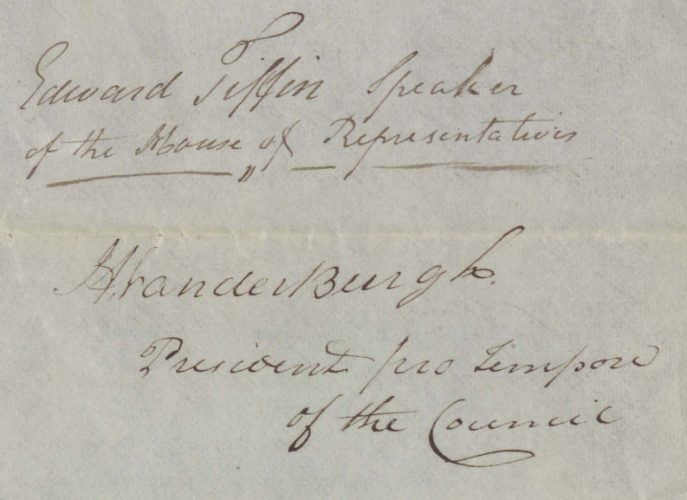Acts of an Uncertain Nature: A Mystery Starring Historical Documents

Update: Please scroll down to read the solution to this mystery, with credit to one of our readers who contacted us via email!
What should a library or other cultural heritage institution do when it has a number of interesting documents but doesn’t know their context? Share them and enlist help from its fellow Ohioans! That’s what we’ve chosen to do today as we present this small collection of pre-statehood documents.

The documents in question are signed by Edward Tiffin during his tenure as Speaker of the House in the Northwest Territory, and by H. Vander Burgh as President of the Council. They are called “acts” but appear not to have passed into law. Take, for example, the act to establish what would be Franklin County. It is dated 1800, but Franklin County was established in 1803. It stipulates that Franklin County would be formed out of Hamilton County; Franklin was actually formed out of Ross County. Similarly, the county of Henry, according to the document, would be formed from Hamilton County in 1800, but Henry was established in 1820. It also says that it would be established near Ross and Adams Counties and, of course, that is nowhere near where Henry County lies. The discrepancies go on and on in this collection.
Yet, the signatures appear to be authentic, and the paper is consistent with paper from the early 19th century. Someone has written “1799” on each document in pencil, but that appears to have happened after their drafting. They are clearly official in some capacity, but they are not law and they do not accurately reflect what we know to be true about the counties they discuss. So… what are they?
It is possible that, were these normal times, and if we had access to our physical collections in our libraries, historical societies, and museums, we could find the answers there. Those collections, however, are inaccessible as we are currently under Ohio’s stay-at-home order, due to the novel coronavirus. And this is a good reminder that, though we work to make information available online, there are some things that just don’t exist in digital formats yet.
So this is where you, the reader, come in. Do you have any ideas on what we have here? Perhaps you’ve run across some interesting information that you could share with us. Your best guesses are just fine; we love tracking down information, and much of what we know about history started with someone’s best guess. So feel free to throw your ideas out there. We’re a receptive audience!

In our search for answers, we rely on clues from the documents and from what we know to be true. So, to aid you in your search, here is what we know:
First, the documents have a few things in common. Those that are not missing the signature pages are signed by Edward Tiffin and H. Vander Burgh. No first name is given for Mr. Vander Burgh, and none has been found thus far. Most have a cover page which gives a title and that page is signed by John Reilly, Clerk of the House of Representatives. No signatures are dated; some state that the act will be effective January 1 or February 1, 1800, while others simply say “1st day of February next” with no year. None appear to accurately reflect the actual formation of the county specified; none of the new counties were formed before 1803. With one exception – the act to divide Knox County and establish Clark County – the documents, which propose the counties of Warren, Franklin, Henry, Montgomery and Scioto, appear to have been written by the same person.
If, during the period of this stay-at-home order, you find that you have time on your hands and would like to help us solve this mystery, please comment or drop us an email to let us know what you find. We welcome any information you come across, and hope that you enjoy sleuthing through Ohio history!
UPDATE:
What you have are acts of the first territorial legislature of the Northwest Territory. That first legislature was elected in 1799 pursuant to a proclamation issued October 29, 1798 by Governor St. Clair. The legislative branch of government for the Northwest Territory was to consist of an elective house of representatives and a five-member legislative council appointed by Congress.
Twenty-two men from nine counties within the Northwest Territory were elected as members of the House of representatives. Dr. Edward Tiffin of Ross County was one of them and he was elected speaker.
The five appointed members of the legislative Council included Henry Vandenburgh, who is the individual identified by his signature on your documents as “H. Vander Burgh.” A separate individual named Henry “Vanderburg” was the printer of the legislature.
The legislature first met on September 16, 1799 in Cincinnati and remained in session until December 19, 1799 when terminated by Governor St. Clair.
Being the first session of the legislative branch of the government of the Northwest Territory, many acts were enacted by the legislature. However, upon the close of the session, the governor enumerated 11 of those acts to which he subjected his absolute veto. Six of the 11 vetoed acts related to the establishment of new counties. Those are the acts the originals of which are among your records and that is why those counties were not formed in 1800 in the locations described in your documents.
The governor explained that he vetoed those acts because he felt the authority to establish counties was an executive function and not a legislative function. This changed when Ohio became a state in 1803 and its first constitution was adopted.
All of the foregoing is taken from the “History of Hamilton County Ohio 1789-1881” by Henry A. Ford and Kate B. Ford, pages 227-229. Copies of those pages are attached.
I hope this helps.
Bill J. Gagliano
Thank you to Shannon Kupfer-Trausch, Digital Initiatives Librarian at theState Library of Ohio, for this week’s post!
Ohio Memory is celebrating 20 years! Visit our blog all year long to learn more about our program, partners and collections.



Leave a Reply
You must be logged in to post a comment.